- Home
- Orson Scott Card
Ender's World Page 6
Ender's World Read online
Page 6
All of these rules that Card breaks are things that it makes sense to teach new writers while they are getting the hang of fiction. The thing that I stress now, when I teach, is that these are principles or guidelines, not rules. People think they have to follow the rules religiously. Or they see an example like Ender’s Game, where the rules are broken and think that none of them matter.
But as Ender says, “Everyone had learned the wrong lesson.”
The rules do matter. They help the reader make sense of the story. The challenge is to understand the cost. Just like for Ender, sometimes there’s a cost for following the rules that is higher than for breaking them.
Mary Robinette Kowal is the author of Shades of Milk and Honey (Tor, 2010) and Glamour in Glass (Tor, 2012). In 2008 she received the Campbell Award for Best New Writer, and in 2011 her short story “For Want of a Nail” won the Hugo Award for Short Story. Her work has been nominated for the Hugo, Nebula, and Locus awards. Her stories appear in Asimov’s, Clarkesworld, and several Year’s Best anthologies. Mary, a professional puppeteer, also performs as a voice actor, recording fiction for authors such as Seanan McGuire, Cory Doctorow, and John Scalzi. She lives in Chicago with her husband, Rob, and over a dozen manual typewriters. Visit www.maryrobinettekowal.com.
Q. How come you shut out any kind of relationship with Ender and his parents? It seemed to me that there should have been some kind of stronger bond. If I were a parent I would want to see my son, and not just send Val to talk to him. Or towards the end, after the war, why didn’t you have him come home to Earth for at least a week to say his goodbyes before making him an outcast?
A. You’re really asking three questions here:
1. Why did I, as a writer, avoid developing a relationship between Ender and his parents?
2. Why did the Battle School cut the children off completely from their parents?
3. Why did Ender’s parents accept the situation?
I’ll answer these in reverse order.
Why did Ender’s parents accept the situation?
Ender’s parents were allowed—no, encouraged—to have a third child only if they accepted the terms from the international Fleet (and therefore the hegemony government). Ender would have to wear the brain-linked monitor from infancy on; if Ender was selected for Battle School, then he would be taken from them, period. They would lose all parental rights from then on.
They grieved when ender was taken from them, but they had understood from before his birth that this was possible, even likely, and that if and when the time came, there would be no appeal and no recourse. In such circumstances, when parents know that they cannot keep a child, they simultaneously cling to every moment together and begin the process of separation and farewell. Of course, the degree to which they cling or separate depends on their individual characters.
Ender’s parents were brilliant, tough people—and both were more analytical than passionate in their actions and expressions. They felt as much as anyone, but did not act on, or act out, their feelings to the degree that many others might have. To outside observers, this might make it seem that they felt little, but this is not true. People often keep their grief utterly private; it does not mean they feel less, only that they show less.
At the end of the war, their failure to send for Ender and communicate with him hurt ender greatly (as depicted in Ender in Exile). But by that time, years had passed. They did not feel that they knew ender. They did not want to intrude on his new life. So they were waiting for some kind of invitation from him, some signal that he would welcome contact from them. This was a mistake—he was, after all, still a child. But from their perspective, he was the “child” who had saved the world; he was now so famous, so important, that they might be forgiven for feeling that he was out of reach to them, that he was now in the superior power position, and that it was up to him to make the first move.
He was no longer the Ender Wiggin that they knew—the precocious six-year-old who was taken away from them. He was a stranger, a creature of Battle School, a boy who had conquered an alien species; he was Alexander the Great. What were they going to do, bring him home and help him through junior high school?
This is not to say that their actions were right, only that they were not inhumane. When Ender Wiggin was taken away, it was with the understanding that he would not belong to them anymore; he was from then on a child of the International Fleet.
Why did the Battle School cut the children off completely from their parents?
The battle school was the ultimate boarding school. At the beginning, they did allow contact between parents and children. But after visits, the children’s performance suffered greatly. They were less attentive in school; their progress lagged; they were more likely to be rebellious; and they were definitely more unhappy.
At first, most kids were homesick and longed for home and parents, but after a year or two, their feelings reversed. Most students wanted to stop visiting with their parents; most of them didn’t even want their parents’ letters. They had nothing to say to their parents—how could their families understand about life in Battle School? and the children were completely uninterested in what was going on at home. That life was over for them. Their identification was complete.
Remember that these children were selected because they were exactly right for Battle School. They responded positively to their training regimen and to the culture of Battle School, which was designed not to break their spirit, but to enliven their instinct for command and competition. Nothing at home could compare to the near-perfection of this culture. If they were not the kind of child who would thrive in Battle School, they were not brought there.
So the administrators of Battle School discovered the following pattern: At first, homesick children would write to their parents begging to see them, to come home again, which made the parents frantic with worry. But then, after a year or two, the letters from their children became perfunctory and then stopped altogether. The parents became even more worried; thinking that the children still felt as homesick as they had before, they thought the school was stopping them from writing. And when the parents finally realized their children really didn’t want to visit or call or write any more, it was devastating.
But once the school instituted the zero-contact policy, everything went better. The parents did not expect to be able to see or communicate with their children. And while the children were allowed to write, venting their initial homesickness, the letters were never delivered, so the parents would not think of their children as lonely and miserable. Later, when the children were no longer homesick and would have resented the time wasted on communication with their families, there was no pressure on them and no additional pain to the parents from the fact that their children no longer wanted any contact with them. Everything went much more smoothly with the “clean break” policy.
Why did I, as a writer, avoid developing a relationship between Ender and his parents?
As a writer, I have learned how very difficult and complicated it is to set characters in a community where they have the full range of human relationships. Every person is a different character in each of his relationships. Our brains have the remarkable ability to sort out our memories, attitudes, even mannerisms, so that we behave differently with each person we have an important relationship with.
We see this all the time; we do this ourselves. We have our “telephone voice,” our “meeting a stranger” attitude. We have the friends whom we immediately start joking with in a certain way, and the ones with whom our conversations are more analytical. If you’re ever away from a close friend from an earlier phase of your life and then meet up with them again after many years, you almost invariably find yourself becoming the person you were back when you were close. It can be quite surprising to realize that the “old you” is still there inside you, waiting for the trigger of that old relationship to wake up that hidden personality.
This is what “characterization” reall
y is, in fiction writing—and, I might add, in acting as well. Too many people think characterization is about finding an interesting backstory for the character, or inventing quirks and eccentricities and mannerisms. Those are actually cheap tricks; it’s what you do to make characters memorable without actually having to create them with any depth.
Instead, real characterization is figuring out who they are, what attitude and manner they present, in each of their significant relationships. This is hard work!
And that’s why most fiction is centered around a character who is a functional adolescent—that is, a person who is disconnected from family and wandering through the world making no lasting relationships beyond the level of bonhomie. Think of Han Solo and Chewbacca, and you get the idea; each one has his mannerisms, and they do not change from person to person. They present the same face to everyone.
Then think of the trio of characters at the heart of Lord of the Rings: Frodo, Sam, and Gollum. Each of them is a different person with each of the others. Frodo speaks to Sam very differently from the way he speaks to Gollum; Gollum treats Sam and Frodo differently; Sam shifts from pert servant with Frodo to hostile overlord with Gollum. Add to this the complexity that Gollum is truly of two minds, so that there is a duality within him that is only occasionally visible to the others, and you end up with an extremely intricate web of relationships.
That’s with three people. Now put a character into a family—parents, siblings. Give him a job—boss, co-workers. Then add in some friends—old friends, new friends—and romantic interests, and the job of characterization becomes daunting indeed.
Which is why most writers avoid the whole situation. All relationships are shallow; “characters” are one thing all the time. They feel like cardboard because they are—a picture that is merely turned to face each other person in turn, with no changes.
Now remember that Ender’s Game was written very early in my career. The short story was my first sale—my first real attempt at real sci-fi storytelling. The novel was among my first ten, and I was still using what we call Romantic storytelling—that adolescent hero, disconnected from others as he moves through the world.
It wasn’t until after I wrote Ender’s Game that I began to work with characterization in complex groups. With Wyrms, the novel I wrote between Ender’s Game and Speaker for the Dead, I assembled a group of characters, most of them representatives of different species and therefore easy to characterize using eccentricities that they presented to everyone the same way. But in the relationships between the heroine, Patience, and the humans in her life—her father, the ship’s pilot, her mentor, and Will, the man she would fall in love with—I had to show her becoming a different person with each.
Then, with Speaker for the Dead, I brought Ender Wiggin, as a thirty-yearold, into a pre-existing family which consisted of a complicated mother, a dead father whose abusiveness had colored all their lives, and multiple siblings who presented different attitudes to each of the others and to Ender himself.
I was a hundred pages into the first draft of the post-Ender’s Game version of Speaker when I showed it to my friend and fellow-writer Gregg Keizer. Gregg’s forthright comment was devastating: When Ender met the children of the family, it was boring because he couldn’t tell the children apart.
That was my wake-up call. I couldn’t separate the children by making them each of a different species, as I had done with the traveling party in Wyrms. They were all human, yet had to be clearly different from each other. That was when I learned the principle of finding quick and easy distinguishing markers to differentiate them at first, and then gradually revealing the really complex characters later, as scenes unfold and relationships develop and clarify. It’s very hard work, but I think I learned the lesson well and have used it ever since.
It’s worth saying that I had actually used complex characterization before, in my novel Saints, but there I was basing the characters on historical people, and I had three times the length to work with, so their natures could be revealed by their choices over time. This is simple “Romantic Characterization,” in which the characters are what they do, but in Saints they had time to do so many things, for so many reasons, that complex characterization developed without my really understanding what I was doing. So I didn’t acquire complex characterization then as a tool I could then apply to other books.
With Ender’s Game, the family section was a throwaway—I rushed through that section merely to get Ender to Battle school as quickly but as interestingly as possible. I knew he needed to come from a family; I used a shallow version of my own situation with my own older siblings (I’m a third child), as I conceived them when I was about Ender’s age.
To a child that age, siblings are the ones that must be negotiated with; parents are simply a given. Parents are what they are and do what they do; they’re like tides, like air, like weather. But siblings are potential rivals and allies. Their relationships shift constantly as they reach different levels of maturity and physical size. Thus I developed Ender’s relationships with Peter and Valentine with clarity, even in Ender’s absence, while leaving his relationships with his parents as a generic fog. On good days I’d call this a writing strategy; on bad days, I’d call it laziness, or mere inattention as I rushed forward to the “real” story.
When I wrote those first chapters of Ender’s Game, I had no plan to use Peter and Valentine or the parents again until the end of the book. But Peter and Valentine, shallow as their characterization was in the first chapter, became so interesting to me that I found a use for them, which became an entire subplot that allowed me to show what was happening on earth while Ender was in Battle School.
In the process, I developed them as full characters, and began to wake the parents up a little—though they were still filtered through the perceptions of their more-than-slightly arrogant children. It was not until the later Shadow books that I created Ender’s parents as real people. In Ender’s Game they remained only what Peter and Valentine thought they were—easily fooled people who had no idea what was going on.
One thing I was certain of in writing the novel: I was never going to use the parents’ point of view. Nor was I even going to use them in the dialogues at the beginnings of the chapters—those spots were reserved for adults in the IF who were talking about Ender Wiggin and/or the war.
So, as a writer, I left the parents passive primarily because the cost of developing them as characters would have been too high, and would not have added anything to the story I had to tell. You can’t tell everything; you can’t develop everything; and so I essentially set the parents aside and concentrated on Ender Wiggin with his siblings and then with the complicated Battle School community.
I have become a much more skilled and self-aware writer since I created the novel Ender’s Game back in 1984. If I were writing it for the first time today, I would probably not spend any more time on Ender’s parents, but I would make them a bit more interesting and complicated, and I would give them a bit more of a role in his inner life at school. Compare the way I treated them with the way I treated Bean’s “parent,” Sister Carlotta, in Ender’s Shadow.
But since the novel has done reasonably well without my having spent more time on the parents, I must say what I always say about the deficiencies of my early work: I did the best I knew how to do at the time with the story that I intended to tell.
—OSC
Q. How did you feel when Apple completely ripped off your Desk design for the iPad?
A. They’re still so far from my vision of the Desk that I can only view the iPad as a step in the right direction.
—OSC
WINNING AND LOSING IN ENDER’S GAME
HILARI BELL
Many years ago, during the Summer Olympic Games, Nike ran a series of ads that made me crazy. I forget most of the narrative, but the tagline was, “There’s only one winner,” followed by a clear implication that everybody else was just dust on the winner’s Nikes. I hat
ed those ads. Everyone who goes to the Olympics is a brilliant athlete to start with. The distance between first and second place, sometimes even first and fourth or fifth or sixth place, is a fraction of a second, a breath, a single missed step. Everyone at the Olympics is a winner, and the difference between them is usually almost nothing. The Nike ads’ statement that only the person who happened to finish first mattered, and everyone else was worthless, made me furious.
I imagined a whole series of counter ads, which told the splendid, heroic stories of the people who didn’t win—who sometimes didn’t even place. Of the distance runner with the injured leg who hobbled into the stadium long after the race was over and the crowd had gone—who knew he hadn’t a hope of winning, but he’d come there to run, even if only his coach and the janitors sweeping up the trash were there to see him limp across the finish line. Of the Iditarod racer who saw an empty dogsled running by, and lost his place to go looking for his fallen competitor—the woman had a concussion, and might have frozen to death if he hadn’t found her.
There are definitions of “winning” that are more subtle than beating an opponent. Simply succeeding, in business or life, can be regarded as winning. So can achieving a high level of skill—as when I said that “everyone at the Olympics is a winner.” But most of those definitions come from our softer modern time. In the old definitions, like the Nike ads, to win you have to beat someone else. Even in the bad old days, though, winning wasn’t always the ultimate goal.

 Shadows in Flight
Shadows in Flight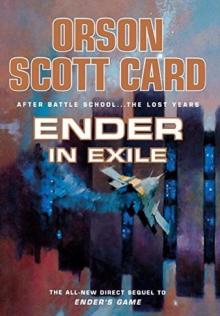 Ender in Exile
Ender in Exile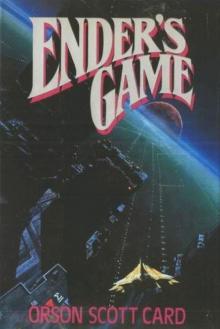 Ender's Game
Ender's Game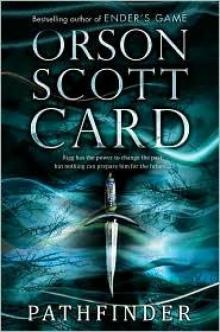 Pathfinder
Pathfinder Children of the Fleet
Children of the Fleet Children of the Mind
Children of the Mind Ruins
Ruins Speaker for the Dead
Speaker for the Dead Ender's Shadow
Ender's Shadow Folk of the Fringe
Folk of the Fringe Hart's Hope
Hart's Hope Shadow of the Giant
Shadow of the Giant Empire
Empire Shadow Puppets
Shadow Puppets Earth Afire
Earth Afire First Meetings in Ender's Universe
First Meetings in Ender's Universe Maps in a Mirror: The Short Fiction of Orson Scott Card
Maps in a Mirror: The Short Fiction of Orson Scott Card Xenocide
Xenocide The Swarm: The Second Formic War
The Swarm: The Second Formic War Saints
Saints Seventh Son: The Tales of Alvin Maker, Volume I
Seventh Son: The Tales of Alvin Maker, Volume I Zanna's Gift
Zanna's Gift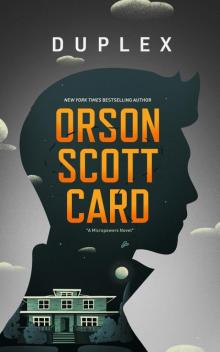 Duplex
Duplex Zanna's Gift- a Life in Christmases
Zanna's Gift- a Life in Christmases Hidden Empire
Hidden Empire Earth Awakens
Earth Awakens Visitors
Visitors Shadow of the Hegemon
Shadow of the Hegemon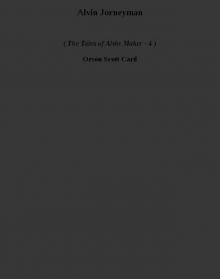 Alvin Jorneyman ttoam-4
Alvin Jorneyman ttoam-4 Federations
Federations The Gate Thief mm-2
The Gate Thief mm-2 First Meetings
First Meetings Capitol
Capitol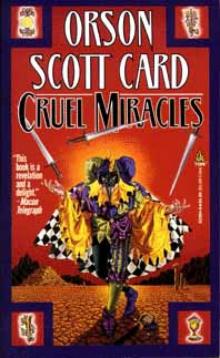 Cruel Miracles
Cruel Miracles Shadows in Flight, enhanced edition
Shadows in Flight, enhanced edition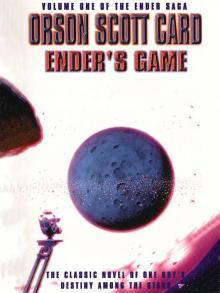 Ender's Game es-1
Ender's Game es-1 Ruins (Pathfinder Trilogy)
Ruins (Pathfinder Trilogy) Ender's Shadow ew-6
Ender's Shadow ew-6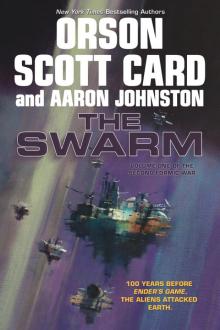 The Swarm
The Swarm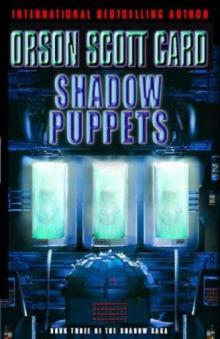 Card, Orson Scott - Ender's Saga 7 - Shadow Puppets
Card, Orson Scott - Ender's Saga 7 - Shadow Puppets Lost Boys: A Novel
Lost Boys: A Novel Mazer in Prison
Mazer in Prison Treason
Treason Heal Thyself
Heal Thyself The Call of Earth
The Call of Earth Songmaster
Songmaster Heartfire ttoam-5
Heartfire ttoam-5 Pastwatch
Pastwatch Gatefather
Gatefather The Ships of Earth: Homecoming: Volume 3
The Ships of Earth: Homecoming: Volume 3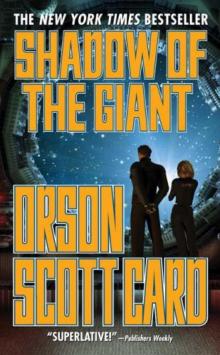 Orson Scott Card - Ender 08 - Shadow of the Giant
Orson Scott Card - Ender 08 - Shadow of the Giant Flux
Flux Speaker for the dead ew-2
Speaker for the dead ew-2 Grinning Man
Grinning Man Ruins sw-2
Ruins sw-2 Earth Unaware
Earth Unaware The Worthing Saga
The Worthing Saga Earthfall (Homecoming)
Earthfall (Homecoming) Card, Orson Scott - Ender's Saga 5 - Ender's Shadow
Card, Orson Scott - Ender's Saga 5 - Ender's Shadow The Abyss
The Abyss Magic Street
Magic Street Masterpieces
Masterpieces Prentice Alvin ttoam-3
Prentice Alvin ttoam-3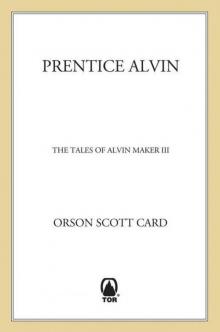 Prentice Alvin: The Tales of Alvin Maker, Volume III
Prentice Alvin: The Tales of Alvin Maker, Volume III Card, Orson Scott - Ender's Saga 3 - Xenocide
Card, Orson Scott - Ender's Saga 3 - Xenocide Homeless in Hell
Homeless in Hell Red Prophet: The Tales of Alvin Maker, Volume II
Red Prophet: The Tales of Alvin Maker, Volume II Earthborn (Homecoming)
Earthborn (Homecoming)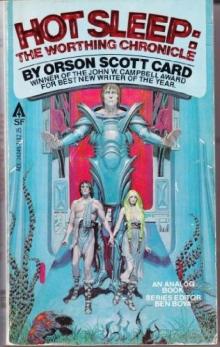 Hot Sleep
Hot Sleep The Hive
The Hive Rachel and Leah (Women of Genesis)
Rachel and Leah (Women of Genesis) Ender's World
Ender's World The Memory of Earth
The Memory of Earth Seventh Son ttoam-1
Seventh Son ttoam-1 Wyrms
Wyrms A Town Divided by Christmas
A Town Divided by Christmas Earth unavare (the first formic war)
Earth unavare (the first formic war) The Shadow of the Hegemon - Orson Scott Card
The Shadow of the Hegemon - Orson Scott Card Earthfall
Earthfall Lost Boys
Lost Boys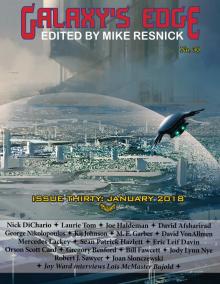 Galaxy's Edge Magazine
Galaxy's Edge Magazine Sarah: Women of Genesis: 1 (Women of Genesis (Forge))
Sarah: Women of Genesis: 1 (Women of Genesis (Forge)) The Crystal City: The Tales of Alvin Maker, Volume VI
The Crystal City: The Tales of Alvin Maker, Volume VI Xenocide ew-4
Xenocide ew-4 Earth Afire (The First Formic War)
Earth Afire (The First Formic War) Maps in a Mirror
Maps in a Mirror Pathfinder sw-1
Pathfinder sw-1 Red Prophet ttoam-2
Red Prophet ttoam-2 THE CRYSTAL CITY
THE CRYSTAL CITY 27 Short Stories
27 Short Stories Heartfire: The Tales of Alvin Maker, Volume V
Heartfire: The Tales of Alvin Maker, Volume V Alvin Journeyman: The Tales of Alvin Maker, Volume IV
Alvin Journeyman: The Tales of Alvin Maker, Volume IV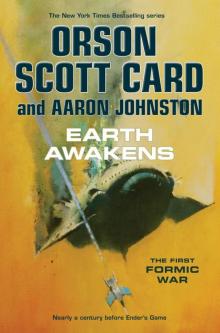 Earth Awakens (The First Formic War)
Earth Awakens (The First Formic War) THE SHIPS OF EARTH
THE SHIPS OF EARTH The Changed Man
The Changed Man Future on Fire
Future on Fire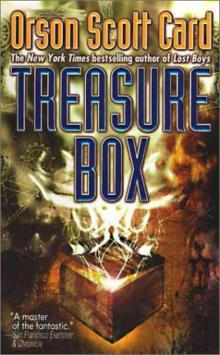 Treasure Box
Treasure Box The Gate Thief
The Gate Thief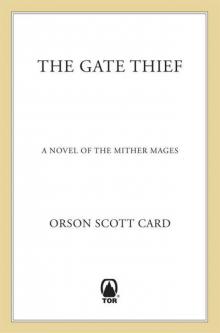 The Gate Thief (Mither Mages)
The Gate Thief (Mither Mages) First Meetings In the Enderverse
First Meetings In the Enderverse Earthborn
Earthborn Seventh Son
Seventh Son Pastwatch: The Redemption Of Christopher Columbus
Pastwatch: The Redemption Of Christopher Columbus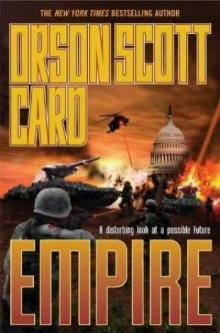 Empire e-1
Empire e-1 Keeper of Dreams
Keeper of Dreams Card, Orson Scott - Ender's Saga 1 - Ender's Game
Card, Orson Scott - Ender's Saga 1 - Ender's Game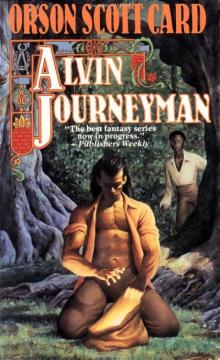 ALVIN JOURNEYMAN
ALVIN JOURNEYMAN The Lost Gate
The Lost Gate Feed The Baby Of Love
Feed The Baby Of Love Hot Sleep: The Worthing Chronicle
Hot Sleep: The Worthing Chronicle